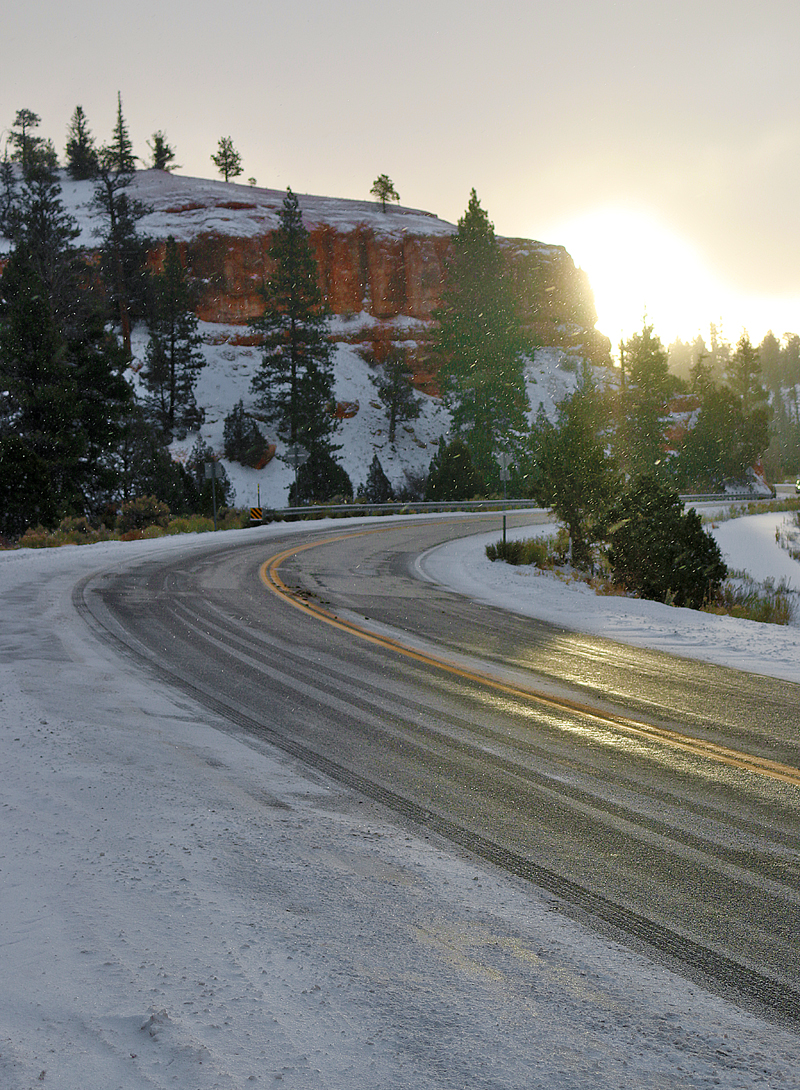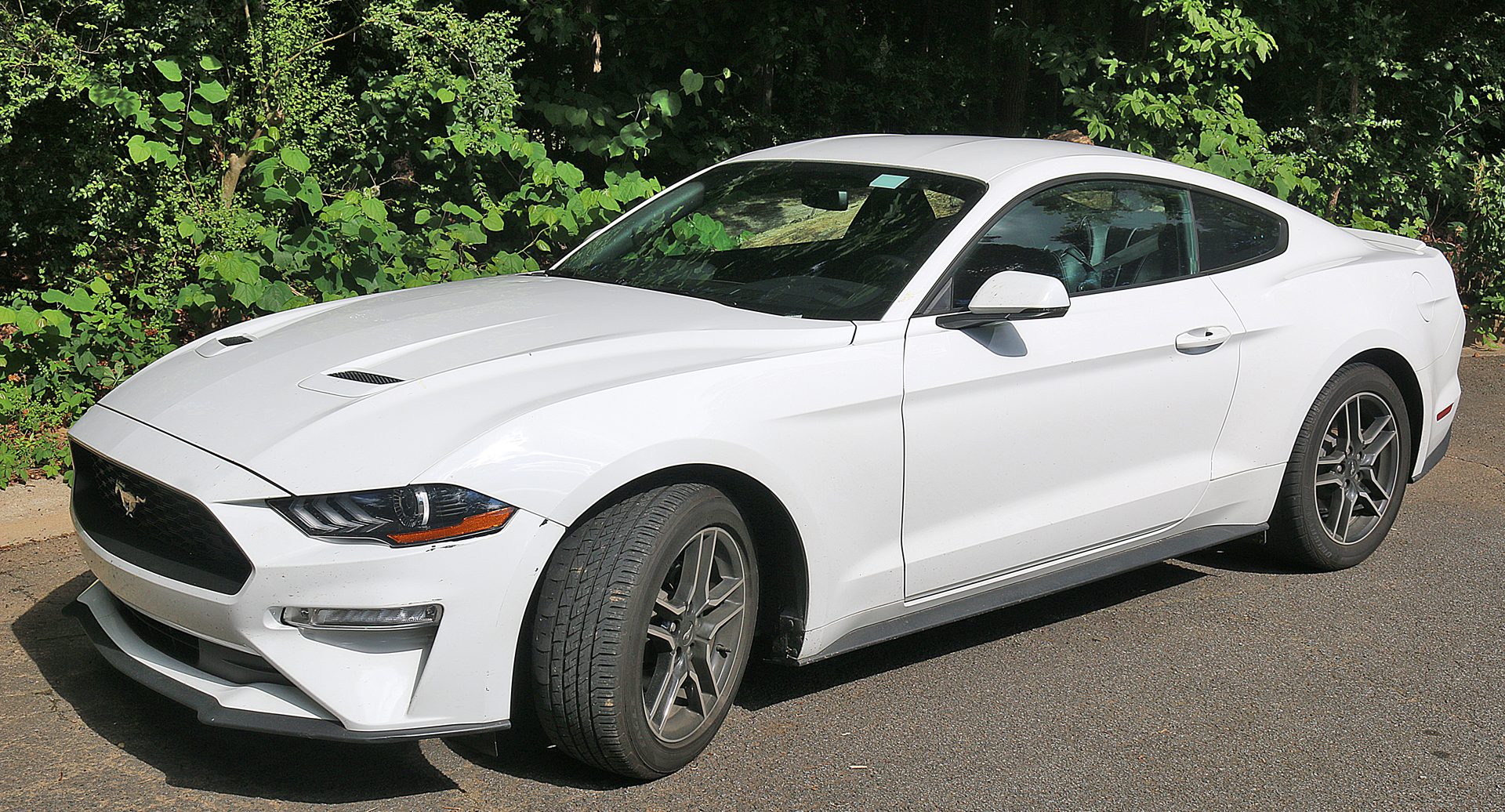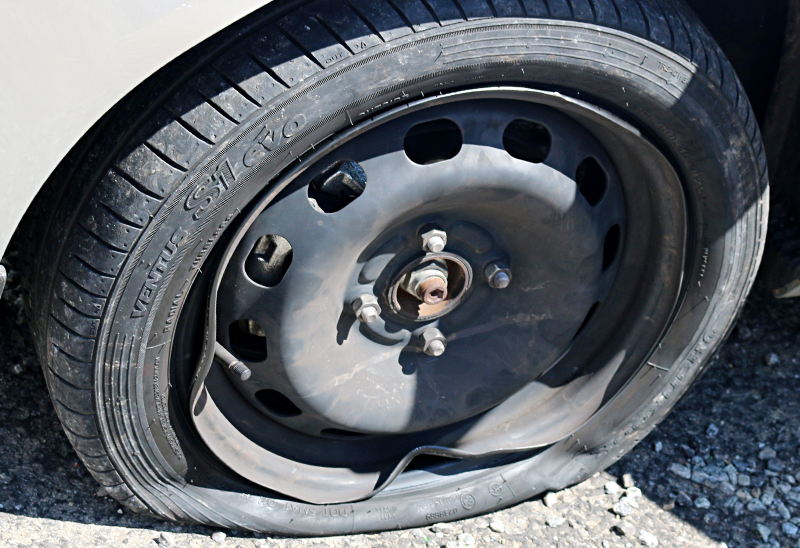Note: This article pertaining to 16 Tips to Driving a Rental Car in Winter Weather was originally published on Tuesday, January 4, 2022 at 8:03 in the evening and has been updated.
Winter can mean thick warm blankets, snowball fights, sleigh rides, hot chocolate, and snowmen — but it can also mean cold temperatures, snow, ice, wind, sleet, and freezing rain.
Renting a car in the winter may not be completely avoidable; but in light of recent winter weather during which some people were stranded with little food, water, and fuel, this guide to driving a rental car in winter weather was prepared for you so that you may be better prepared when driving a car in an area which is susceptible to winter weather conditions.
16 Tips to Driving a Rental Car in Winter Weather

You may be forgiven in mistakenly thinking that the members of the staff at a facility of the rental car company would ensure that the vehicle which you are renting is prepared as best as possible for winter weather…
…but the truth is that is not always the case — especially if the vehicle is originally from a rental car facility which is located in a warmer climate, as it could have arrived from one during a one-way rental.
Also, not every rental car facility prepares vehicles for winter weather the same way. A rental car facility in the mountains of Colorado may have different protocols than one on the plains of North Dakota due to differing winter weather conditions and topography.
1. Check Your Insurance Coverage Before You Go.
Carefully read the insurance policy which you intend to cover the vehicle which you are renting — regardless of whether that policy is provided by your primary automobile insurance provider; the credit card which you will use to pay for the rental of the vehicle; or outright purchasing insurance from the rental car company itself — and ensure that you are covered in case you are involved in an accident or are stranded due to winter weather.
You might even consider paying for the collision damage waiver which is sold by the rental car company if the insurance which you are using does not cover that aspect in the event of an accident or an emergency.
2. Keep the Emergency Contact Telephone Number of the Rental Car Company Handy.

Keep the telephone number of the roadside assistance of the rental car company handy and ensure you have good insurance in the event that an emergency situation suddenly arises.
3. Choose the Right Vehicle For Winter Weather Conditions.
Sport utility vehicles are naturally better suited to handle tricky winter conditions than other types of vehicles because they are equipped with higher ground clearance — which is the distance between the lowest point of the vehicle and the ground itself. They also have larger wheels and tires — and some sport utility vehicles are even equipped with all-wheel drive or four-wheel drive capability.
Vehicles which are equipped with all-wheel drive or four-wheel drive in winter weather are usually not readily available from rental car companies — and they may more of an added expense which you can avoid, as a front-wheel drive vehicle which is equipped with all-season tires that are at least in good condition will typically handle many winter weather situations.
4. Choose a Vehicle With Which You Are Already Familiar

Ensure that you are comfortable and confident driving the size of rental vehicle which you pick up at the facility. If you are used to driving a sedan, renting a sport utility vehicle may likely mean adjusting to different blind spots, sitting higher in the driver’s seat, and even having a difficult time steering if you are not used to it. Instead, stick with the type of vehicle with which you are most familiar, if that is at all possible.
5. Familiarize Yourself With the Features of the Rental Vehicle Before You Hit the Road

Even if you are renting a car which is identical to the one you drive on a regular basis, consider taking a couple laps in the parking lot of the rental car facility to get acclimated with the features of the vehicle. Know how to shift to all-wheel drive if you need it later on in your journey — as well as how to adjust all of the mirrors. Familiarize yourself with alarm features like blind spot beeps so that you are not startled by them when you are driving. Activate the global positioning system and ensure that the directions are audible enough so that you do not have to be concerned about taking your eyes off the road or hands off the steering wheel.
If you are not comfortable driving in the parking lot, then you will not be comfortable barreling down the highway — and that will be your ideal time to switch rental vehicles to something which works best for you.
6. Be Sure That the Rental Vehicle is Equipped With Anti-Lock Brakes.
Renting an all-wheel drive or four-wheel drive vehicle for driving in the snow may be a good idea — but rental car companies do not always offer them; and they can be difficult to find. Definitely avoid vehicles which are equipped with rear-wheel drive. Unless you are plying through the roads in the middle of a substantial blizzard or headed to a ski area with a switchback access road, all-wheel drive or four-wheel drive vehicles often are not necessary — and the extra cost to rent them may not be worth the money.
Most new cars these days are front-wheel drive and handle fairly well in light snow and moderate snow. Ensure that you rent a car with an anti-lock braking system. In general, the most dangerous part of driving in the snow is braking — particularly on a curve. Although anti-lock brakes may help to keep the car from sliding out of control, they will not prevent skids and slides completely — especially if the motorist drives too fast or drives carelessly.
7. Ensure the Rental Vehicle is Equipped With All-Season Tires in Good Condition.
Although you have better odds of handling a vehicle which is equipped with all-wheel drive or four-wheel drive in winter weather versus a vehicle which is equipped with two-wheel drive, that is usually more of an added expense which you can avoid, as a front-wheel drive vehicle which is equipped with all-season tires that are at least in good condition will typically handle many winter weather situations — never mind the fact that reserving a vehicle to rent with either all-wheel drive or four-wheel drive can be difficult to do.
Furthermore, ensure that all of the tires are filled with air to the proper air pressure.
8. Prepare a Kit of Items Which Could Help You in an Emergency.
Emergencies can happen to anyone — especially in the wintertime — no matter how experienced you are as a driver, as anyone can run out of fuel, blow a tire, or hit a patch of black ice. An emergency car kit can help get you back on the road safely. Items which will help keep you safe, warm, and comfortable include — but are not necessarily limited to:
- Ice scraper is absolutely an essential item which should be provided by the rental car company, as this little tool will help remove frost and ice which forms on the windows and mirrors of the vehicle within minutes. If an ice scraper is not available, a credit card can be a handy substitute.
- Snow brush is helpful when you need to clear powdery snow or wet snow off of the windows and mirrors of the vehicle.
- Jumper cables could charge a dead battery within minutes — and fellow motorists are almost always willing to take a few minutes out of their routines to assist a driver in need.
- Soft items and layers of clothing — such as mittens, scarves, hats, socks, earmuffs, and blankets as only six of many examples — can significantly help to keep everyone in the vehicle warm if you end up stranded on the road — and can literally save lives.
- Flashlight will help you see at night — especially in areas where no street lights or other external lights are available.
- Extra batteries for flashlights and other portable electronic equipment.
- First-aid kit — including bandages, gauze pads, iodine, and antibiotic cream as four of numerous useful items — can help temporarily treat injuries until more adequate medical care is accessible.
- Bottled water will help keep thirst at bay — especially if no clean snow is available nearby for consumption.
- Non-perishable snacks — such as pretzels, granola bars, and chocolate — are important to have available for emergency situations when you are hungry.
- Windshield washer fluid — plenty of this liquid should be available in its reservoir; and this should not freeze in cold weather when used. In fact, it should be able to melt ice and snow — as well as help clean mud, dirt, and other debris — off of the windshield when the wipers are activated.
- Anti-freeze fluid is the responsibility of the rental car facility from which you rent the vehicle; and it should be filled to the proper level. Ask a member of the staff to double-check that an adequate amount is in the vehicle.
- Basic tool kit of screwdrivers, pliers, and an adjustable wrench — but you will likely have to check these items if you are traveling as a passenger via airplane.
- Portable charger for mobile telephone so that you always have enough battery power for emergency calls.
- Shovel in case your vehicle suddenly winds up stuck in a snow bank in a sparsely populated area and you need to scoop out significant amounts of snow. An inexpensive shovel can be purchased at a hardware store.
- Car seats are not an emergency item; but rental car companies will supply you with one upon request for an additional fee for the safe transportation of an infant or toddler.
- Ski racks are also not an emergency item — rental car facilities will provide you with one for a fee; and you can also check the offers of rental car companies for deals pertaining to snow skiing — but if you are transporting skis to the slopes and you get stranded, the skis on the ski racks could provide a way of negotiating deep snow pockets when attempting to get somewhere.
9. Ensure the Rental Vehicle is Equipped With a Spare Tire in Good Condition.

The last thing you will want to do is be stuck in the middle of nowhere because the wheel of your vehicle hit a pothole and resulted in a damaged flat tire — only to find that no spare tire is located in the trunk.
As with the other tires, ensure that the spare tire is inflated to the ideal air pressure — and note that a spare wheel is usually significantly smaller than the other four wheels; so it is meant to take you to a facility where the damaged wheel or tire can be repaired or replaced and not designed for normal driving.
10. Check the Blades of the Windshield Wipers.
Clear visibility of the road ahead of you could be the difference between an uneventful drive — and an unwanted eventful one. Sometimes simply cleaning the blades of windshield wipers does the trick for improved visibility.
11. Plan Your Route Carefully — and Leave Extra Time.
Ensure that you leave plenty of extra time to get to your destination, as you do not want to be speeding, rushing, or feeling frazzled — especially during inclement winter conditions — as you want your mind to concentrate on being focused on the road and not the timing of getting to your meeting or the hotel property on time.
Plan your route ahead of time so you can take advantage of any rest stops, restaurants, refilling your fuel tank at a service station, or must-see attractions along your way — or if you simply need a break.
Do not forget to check the roads and weather for your winter road trip. Weather can change from one location to the next. That’s why it’s important to check road conditions for your starting point, ending destination and every stop in-between. Safe TravelUSA has a map that shows road, traffic and weather conditions across the country.
12. Keep the Fuel Tank At Least Filled Half Way.

If a traffic jam could last at least 24 hours, you will need fuel to keep you warm — as well as to get you to the next fuel station.
13. Become a Member of Emergency Road Service.
If emergency road service is not included in your rental car contract and none of your credit cards include it as a benefit — or if the benefit is not enough to cover certain scenarios — consider purchasing emergency road service from companies such as the American Automobile Association.
In fact, you can find out about more helpful ways to prepare for winter situations on the road with this Winter Car Care Checklist from the American Automobile Association.
14. Snow Tires and Snow Chains? That Depends…
Snow chains can help wheels gain traction in slippery winter weather conditions — so you would think that rental car companies would automatically provide them…
…but that is not always the case.
“Chains can cause damage to tires, rims, wheel covers, fenders, and engine compartments if they are installed incorrectly, slip, break, or are the wrong size. If the rental car provider says no chains, accept it”, according to this article from the official weblog of AutoSlash. “Note that some car rental services will allow customers to select a check box requesting tire chains for car rentals in the U.S. and Canada, then permit reservations with companies that don’t allow chains. What happens to those requests? They will not be honored by the rental car companies.”
The article goes on to state that “We’ve seen too many examples of bad things happen to good people who stretch the rules in rental cars. Those mistakes are costly. Drivers wrecking a rental car while breaking a rule often end up paying for the car, as your insurance will be void if you violate the rental contract.” As with other ancillary fees, if rental car companies determined that snow tires and snow chains could be profitable — given the risk, of course — they would surely offer them to customers.
15. Consider Taking a Winter Driving Class.
This tip may be meant for drivers who are not accustomed to maneuvering a vehicle in snow and ice — but do you know what to do if your vehicle happens to skid on black ice, for example?
16. Slow Down.
Count six seconds between the front of your rental car and the rear of the vehicle in front of you while driving — regardless if you are traveling along a highway or a street — in adverse driving conditions which are caused by inclement weather. At a speed of 55 miles per hour — or 88 kilometers per hour — ensure that the distance between your rental car and the vehicle in front of you is at least 486 feet, as you certainly do not want to unnecessarily place yourself in a situation in which a major pileup is caused simply because you did not have enough stopping time for sudden swerves and skids…
…and if a vehicle is tailgating behind you, either gently slow down so that the motorist driving that vehicle behind you can pass you — or momentarily pull over to the shoulder to let the vehicle safely pass. Road rage is not worth the consequences of an accident.
To complicate matters, the rental car which you may be driving is likely different from the vehicle which you drive on a regular basis due to a number of quirks and nuances — so access to such emergency equipment as hazard signals and the horn may not be as intuitive and could require a precious extra second or two of locating them before you can use them. Even though the brake pedal is generally in the same position on the floor of all vehicles, stopping distance could differ due to a number of factors — including how worn down are the brake pads as one example.
Final Boarding Call
Emergency situations in winter weather are unforeseen and can be sudden — but the better prepared you are for one, the better chance you have of surviving it and escaping it as soon as possible…
…or — at least — being as comfortable as possible in the process.
All photographs ©2015, ©2018, ©2019, ©2020, and ©2021 by Brian Cohen.

